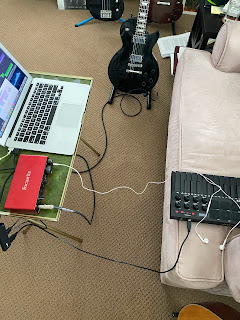I came across The Language of New Media in a film theory course I took when I was working toward my Ph.D. It is not a book exclusively on cinema, but there are a lot of great sections on the intersection of film and new media.
When I teach digital media, the first thing I ask students is what makes new media new? Manovich takes up this question in the beginning of his book. For Manovich, how new media became new is binary code (0s and 1s), "all existing media into numerical data accessible through computers (20). His answer may seem simple, but it has a major role in his overall argument, particularly for the history of cinema.
One of his claims is that cinema, now more than ever, is a
painterly medium due to the digital
tools at filmmaker’s disposal. He sees live action filmmaking as raw material
that will later be digitally manipulated.
Just to give you an idea of what he means, check out this VFX video for The Wolf of Wall Street--
But Manovich notes that cinema was a painterly medium from the start, which can be traced to the silent short films of Georges Méliès, such as A Trip to the Moon.
Another topic he takes up is photorealism:
“The ability to simulate any object
in such a
way that its computer image is indistinguishable from a photograph”
(184). He argues that computer graphics are too real and need
imperfections.
This was a significant point for me which I explored in my book Capturing Digital Media. I went further with this notion to explore it psychical effects, looking at purposely and unconsciously inserted imperfections into the moving image.
There are lots of interesting sections in The Language of New Media, such as his reading of interactivity and database narratives. I highly recommend it for those interested in both digital media studies and film theory.

























